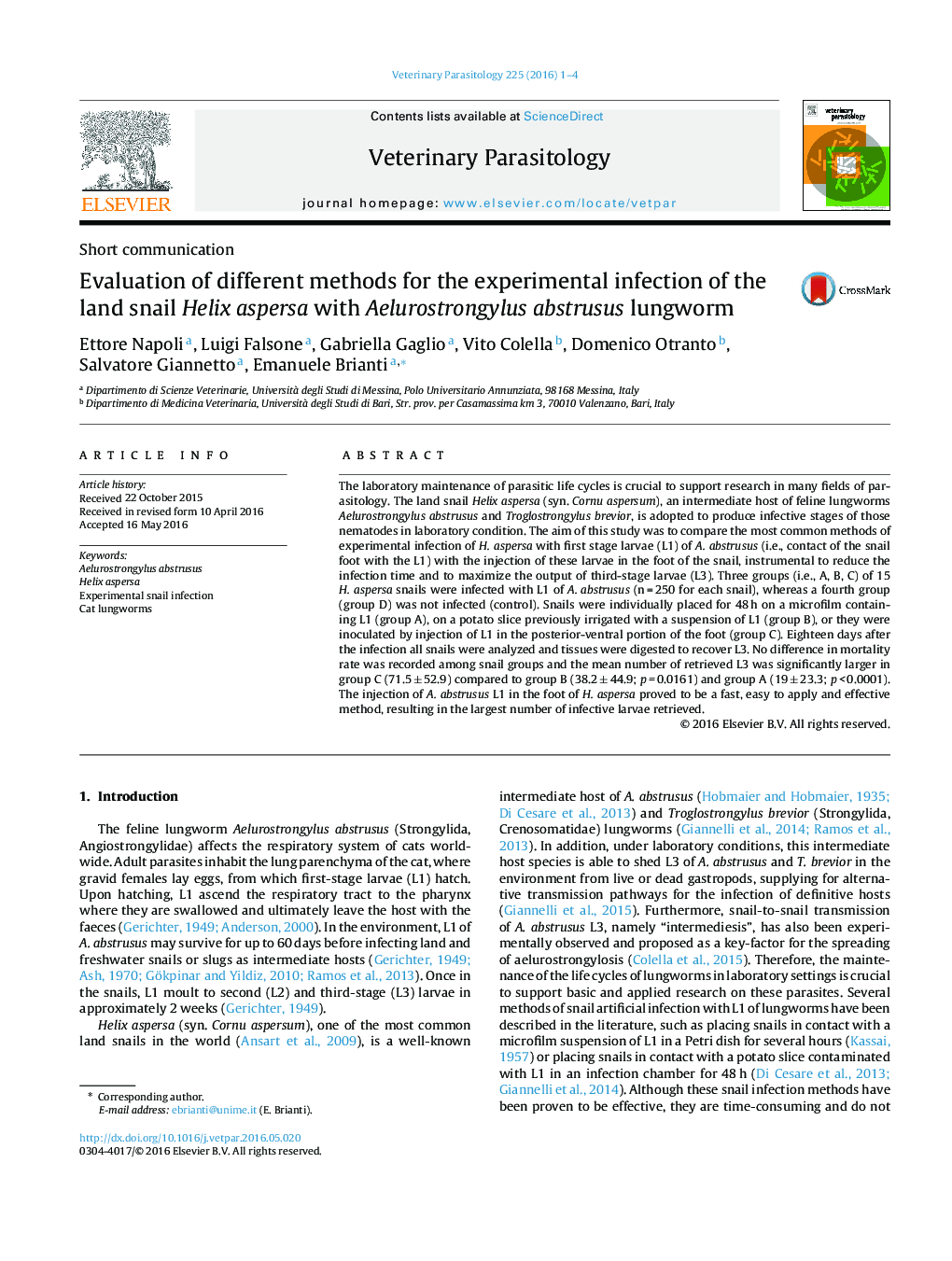| کد مقاله | کد نشریه | سال انتشار | مقاله انگلیسی | نسخه تمام متن |
|---|---|---|---|---|
| 5802139 | 1555651 | 2016 | 4 صفحه PDF | دانلود رایگان |

- Experimental infection methods of H. aspersa with A. abstrusus were compared.
- The development of A. abstrusus did not impair the survival of infected snails.
- The largest number of recovered L3 was obtained by the injection method.
- Injection method proved to be a fast and effective method for snail infection.
The laboratory maintenance of parasitic life cycles is crucial to support research in many fields of parasitology. The land snail Helix aspersa (syn. Cornu aspersum), an intermediate host of feline lungworms Aelurostrongylus abstrusus and Troglostrongylus brevior, is adopted to produce infective stages of those nematodes in laboratory condition. The aim of this study was to compare the most common methods of experimental infection of H. aspersa with first stage larvae (L1) of A. abstrusus (i.e., contact of the snail foot with the L1) with the injection of these larvae in the foot of the snail, instrumental to reduce the infection time and to maximize the output of third-stage larvae (L3). Three groups (i.e., A, B, C) of 15 H. aspersa snails were infected with L1 of A. abstrusus (n = 250 for each snail), whereas a fourth group (group D) was not infected (control). Snails were individually placed for 48 h on a microfilm containing L1 (group A), on a potato slice previously irrigated with a suspension of L1 (group B), or they were inoculated by injection of L1 in the posterior-ventral portion of the foot (group C). Eighteen days after the infection all snails were analyzed and tissues were digested to recover L3. No difference in mortality rate was recorded among snail groups and the mean number of retrieved L3 was significantly larger in group C (71.5 ± 52.9) compared to group B (38.2 ± 44.9; p = 0.0161) and group A (19 ± 23.3; p < 0.0001). The injection of A. abstrusus L1 in the foot of H. aspersa proved to be a fast, easy to apply and effective method, resulting in the largest number of infective larvae retrieved.
Journal: Veterinary Parasitology - Volume 225, 30 July 2016, Pages 1-4